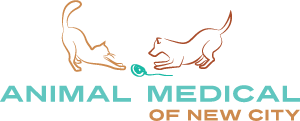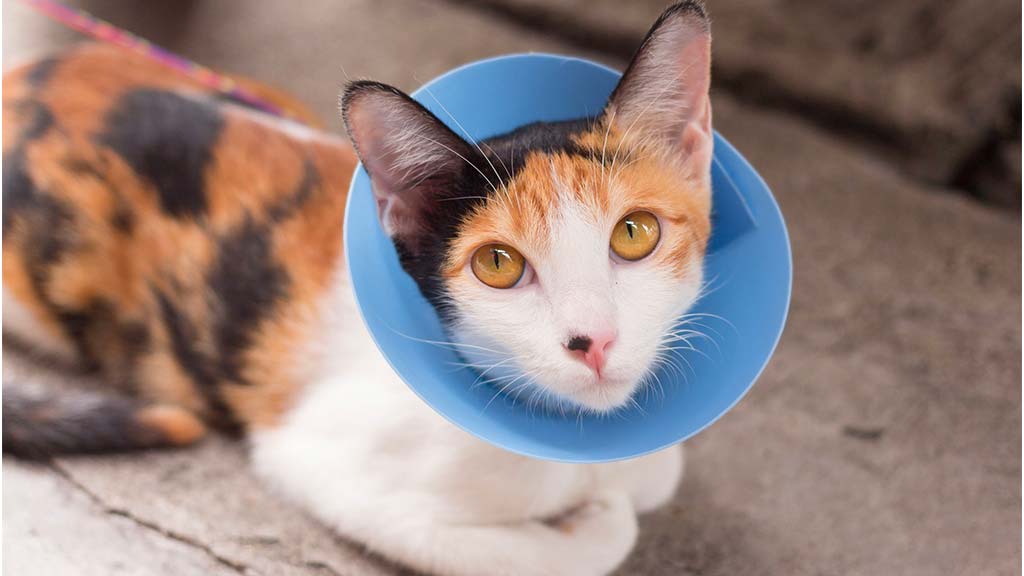Taking My Pet Home After Surgery
Pets that go home the same day after surgery may act or appear tired. This is normal as the last remains of the anesthetic wear off. The fatigue should be gone the following day. It is normal for patients to urinate the same day as they’ve had surgery, but they may or may not defecate.
While it is normal for your pet to be sleepy the same day of surgery, he or she should rouse easily from sleep and should be able to stand and walk in an oriented fashion. It is not normal for patients to be so tired after discharge that they don’t respond to you, wake easily, or move about.
Feeding
If you are taking your pet home the same day after surgery, feed a small portion of his or her food. Restrict the portion to no more than 1/2 of his or her regular meal size. Anesthesia sometimes makes pets nauseous. By serving a smaller portion, you decrease the risk of an upset stomach and/or vomiting.
Sometimes pets refuse food the same day as surgery, but their appetite typically returns the following day. If your pet does not eat on the day following surgery, please call us for instruction on how to respond.
Feeding and Elimination the Following Day
On the day following surgery, feed your pet according to his or her customary schedule. Leash walk your dog and check to see that your cat has used the litter pan. In multi-cat households, it is not uncommon for the cat returning from the hospital to be shunned or bullied by the others. If this is the case, allow your cat to recover in a separate space where he or she can have access to food, water, and litter without risk of being ambushed by the others. Try as best you can to limit jumping behavior in cats. In all cases, keeping an E-collar on your dog or cat will restrict your dog or cat’s movement enough to keep the incision site safe.
There should be no dramatic change in the color of your pet’s urine following surgery. In rare cases, pets may have diarrhea or constipation following surgery. If this is the case, call our office for our doctors’ input on how to respond.
How Do I Care For My Pet’s Surgery Site?
Look at the surgery site daily. It is not uncommon for there to be a small amount of redness at or around the incision site. This is caused by the trauma of surgery and irritation from the shaving process. Hereafter, the red color at the surgery site and the surrounding skin should gradually return to a normal color. Signs of increased reddening may indicate infection and warrant a return visit to our practice.
Is It Normal For My Pet’s Surgery Site To Ooze?
Sometimes surgery sites ooze small amounts of clear, or slightly reddish fluid called serum. This is normal. Significant amounts of ooze are not normal and warrant a visit to our office. In cases where our veterinarian installed a drain(s) at the incision site (it will look like a folded flap of tan latex sticking out of the incision), it is normal to see discharge. The discharge should be clear or reddish-clear. Cloudy discharge and/or puss is not normal. Cloudy discharge or puss is usually accompanied by redness, swelling, and hot skin, all of which point to an infection that requires treatment and a return visit for our care.
Will My Pet’s Stitches Dissolve? Do I Need To Have My Pet’s Stitches Removed?
Your pet’s surgery site will be closed with staples, suture, or a safe, surgical glue. In most cases, staples and sutures are removed 10 to 14 days after surgery. Surgical glue will gradually be absorbed by the body as the wound heals. Staple and suture removal is done at our office. The process is painless and fast. Your pet will not require sedation for the process. It is important that sutures are removed according to the instructions your received from us at discharge. Some incisions have internal sutures (not visible to the eye) and external sutures that close the surface skin at the surgical site. Internal sutures dissolve on their own, external sutures are removed at our office
Do I Need To Clean My Pet’s Surgery Site?
In almost all cases you won’t need to clean your pet’s surgery site. Don’t bathe your pet for 10-14 days after the surgery or until the sutures/staples are removed. Don’t allow him or her to swim or engage in any activity that will expose the surgery site to water, dirt, or mud. In cases where there is some clear discharge, you can wipe the surrounding fur with a moist cloth. Do not wipe the wound itself unless instructed by us to do otherwise. In cases where there is a drain in place, make sure that the drain continues to flow with clear or reddish-clear fluid.
Does My Dog Have To Wear a Cone After Surgery?
If your pet is unsupervised, he or she should wear a cone (known as an Elizabethan collar) after surgery. The cone will prevent your pet from licking or chewing at the site, an action that could be disastrous for the healing and recovery process, and limit mobility so that your pet doesn’t tear open his or her sutures. Think of the cone as a small price everyone has to pay for assurance that the healing process won’t be compromised by infection or ruptured sutures.

It’s not that bad! Dogs and cats don’t understand the need for an Elizabethan collar. Be patient, your pet will acclimate to the restrictive device. Its a brief imposition on your both that will pay off with much needed protection against licking, chewing, and excessive jumping and running.
Can My Pet Play After Surgery?
Leash walk your pet until the sutures are removed. Try your best to limit your cat or dog’s jumping, running, and other activities that might cause the surgery site to open. The above-mentioned Elizabethan collar does an excellent job at limiting risky activity.
How Do I Know If My Pet’s Surgery Site Is Healing Properly?
Incision sites should not be significantly warmer than other parts of the pet’s body. They site itself, and the surrounding tissue, should not be getting progressively redder. You should not see cloudy discharge or pus. The site should not smell and it should not be significantly swollen. Any of these signs may indicate that the incision site is infected and a return to our office is required.
Congratulations You’re Almost There!
The hardest part is behind you. Provided you follow these instructions, the risk of a post-surgical complication is low. Within 10 to 14 days, you’ll be back at our office for a recheck, we’ll confirm that the healing process is nearly complete, we’ll remove any sutures or staples, and you and your pet can resume your normal lives. There will be no need for a collar, or a restriction on activity. Best of all, the surgery will have been a success!
Thank you for allowing us to care for your pet. Remember to reach out with questions.

